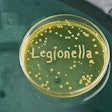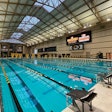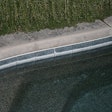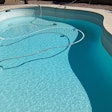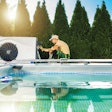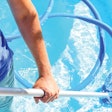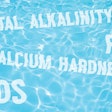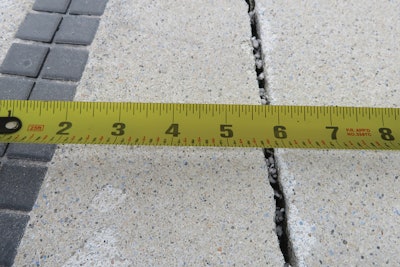
ASR, an acronym that stands for "Alkali Silica Reaction," has received attention recently in seminars and discussion in the pool builder community. The ASR phenomenon is sometimes referred to as "concrete cancer" due to its similarities to that disease in its effects on concrete.
Cases of ASR are unusual, and it's a regional issue. When it strikes, it's a big deal in the local builder community, but in other areas, few people know anything about it.
ASR stems from the accidental use of rare, highly reactive aggregate, and since that agg is inevitably coming from the local quarry, the problem is localized around it. To recap the basics of ASR, it's a chemical reaction that rapidly breaks up concrete from within. Reduced to its simplest terms, it starts with a combination of moisture and bad (reactive) aggregate.
Paolo Benedetti is a Watershape University instructor, a legendary builder in his own right and an authority on best practices in the pool industry. He gave a seminar on ASR this spring at the Southwest Pool & Spa Show in Houston, in the wake of the recent outbreak of ASR in central Texas. Benedetti described the product of the ASR chemical reaction as "a gel that forms around the agg, and continues to swell, fracturing the concrete, which provides pathways for more moisture, which results in more fracturing."
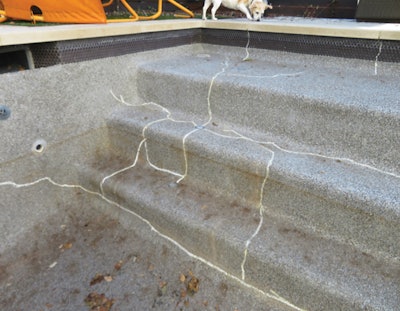
The overwhelming and vast majority of aggregate quarried in the world is not reactive and will not trigger ASR, but a tiny percentage of it is and will. An outbreak of ASR occurs when some of that reactive agg is excavated from a quarry, and finds its way into a concrete structure, whether that is a bridge abutment, a building foundation or a pool.
With that unlucky, bad agg in the mix (unbeknownst to the builder) and the resultant concrete formed and set, the speed of the reaction and thus, concrete destruction, will depend on the amount of moisture intrusion.
One way to prevent ASR is to avoid the use of reactive agg, but that's hard to do. A builder can have the agg tested for reactivity, but those tests are expensive and somewhat unreliable, with a reported 50% false positive rate. A more practicable preventative is the use of pozzolans, such as fly ash, slag and silica fume in the concrete mix, which reduce the permeability of concrete. By reducing moisture intrusion, you strike a strong blow against ASR.
Pozzolans were more common practice among builders, Benedetti says, but "in the last seven or eight years, due to unavailability, the use of pozzolans, such as fly ash, slag and silica fume, has dropped."
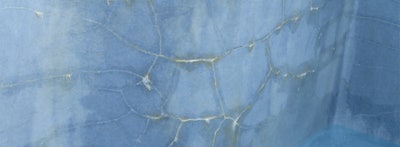
This drop in the use of pozzolans, he suggests, has contributed to the potential for cases of ASR. But another big contributor is water intrusion. And according to Benedetti, there are a number of things a builder can do to give concrete stronger resistance to ASR and other problems that are associated with moisture in concrete. These include standard best practices, such as making sure shotcrete has high compressive values, which makes it more dense and less permeable, and controlling shrinkage cracks through the use of a better steel-to-concrete ratio. Using less water in the cement mix also helps but, of course, comes with tradeoffs.
In existing pools, the best course to control the spread of ASR fracturing is to reduce water intrusion as much as possible, says John McIntyre, a professional engineer from the Austin area who specializes in the pool industry, and who has seen the outbreak in central Texas firsthand: "You can't take the aggregate out of an already cast wall. So the only thing you can control at that point is the water," which means mitigating moisture intrusion from external sources. That means everything from proper waterproofing to drainage.
This article first appeared in the May 2023 issue of AQUA Magazine — the top resource for retailers, builders and service pros in the pool and spa industry. Subscriptions to the print magazine are free to all industry professionals. Click here to subscribe.
































